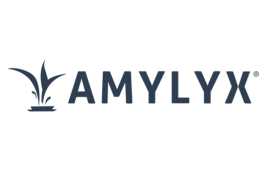
Medical researchers have identified a key signaling protein that regulates hemoglobin production in red blood cells, offering a possible target for a future innovative drug to treat sickle cell disease (SCD). Experiments in cultured human cells reveal that blocking the protein reduces the characteristic sickling that distorts the shape of red blood cells and gives the disease its name.
“We have found a protein with activity specifically in red blood cells that could be a ‘druggable’ target, possibly with a small molecule–a pill that patients could take to treat sickle cell disease,” said study co-leader Gerd A. Blobel, MD, PhD, a scientist at Children’s Hospital of Philadelphia (CHOP). Blobel and study co-leader Junwei Shi, PhD, of the Perelman School of Medicine at the University of Pennsylvania, published their findings online July 19 in Science.
The signaling protein, or kinase, called HRI, has been known to regulate production of hemoglobin, the iron-carrying component of red blood cells. The new results reveal an unexpected role of HRI in a process called “hemoglobin switching.” This is a transition that normally occurs in newborns during which red blood cells switch from producing a fetal form of hemoglobin to an adult form. The mutation that causes SCD is present in the adult form of hemoglobin, which is why the disease affects patients only after birth.
The SCD mutation causes cells to assume the abnormal crescent shape that clogs blood vessels and damages organs, with painful, sometimes life-threatening results. Hematologists have long known that SCD patients with higher ratios of fetal hemoglobin compared to adult hemoglobin have a milder form of the disease. The drug hydroxyurea, which increases fetal hemoglobin, is the current standard of care, but is not effective in all patients. Therefore, the current researchers sought an improved treatment.
Blobel and Shi relied on a screening tool using CRISPR gene-editing techniques. Shi had previously developed this tool to hone in on specific functional domains of genes, without interfering with the functions of entire genes. In this particular screen, the researchers focused on a class of domains encompassing protein kinases, enzymes that can potentially be inhibited by a small molecule.
The screen enabled the researchers to discover HRI as the kinase that helps to silence fetal hemoglobin production in adult red blood cells. Moreover, by identifying an HRI-regulated transcription factor already known to repress fetal hemoglobin, their study added a piece to the puzzle as to how HRI suppresses fetal hemoglobin production. When they selectively knocked out HRI’s function, they raised the level of fetal hemoglobin in red blood cells.
Crucially, the researchers were able to decrease sickling in red blood cells obtained from SCD patients, without impairing the viability or maturation of the cells–suggesting that losing the function of HRI is well tolerated.
In proof-of-concept experiments, Blobel and Shi further examined whether a future drug that inhibits HRI might be more effective when combined with other drugs designed to raise fetal hemoglobin. The scientists combined HRI depletion with treatment with pomalidomide, an experimental drug known to increase fetal hemoglobin. In cell cultures, using HRI depletion and pomalidomide together had a stronger effect than using each approach separately, supporting the idea of a combination therapy for SCD.
Another potential application of this finding, added Blobel, may be in another inherited blood disorder, beta-thalassemia, also involving abnormal hemoglobin. Although beta-thalassemias can be caused by many different mutations, a subset of beta-thalassemia patients might benefit from future treatments that target HRI.
“Our long-term goal is to carry out follow-up studies to evaluate whether this approach improves clinical outcomes in patients,” said Blobel. “At this point, our results suggest that HRI is a potential target for a new treatment for disorders of hemoglobin.”
Filed Under: Orphan Drugs



